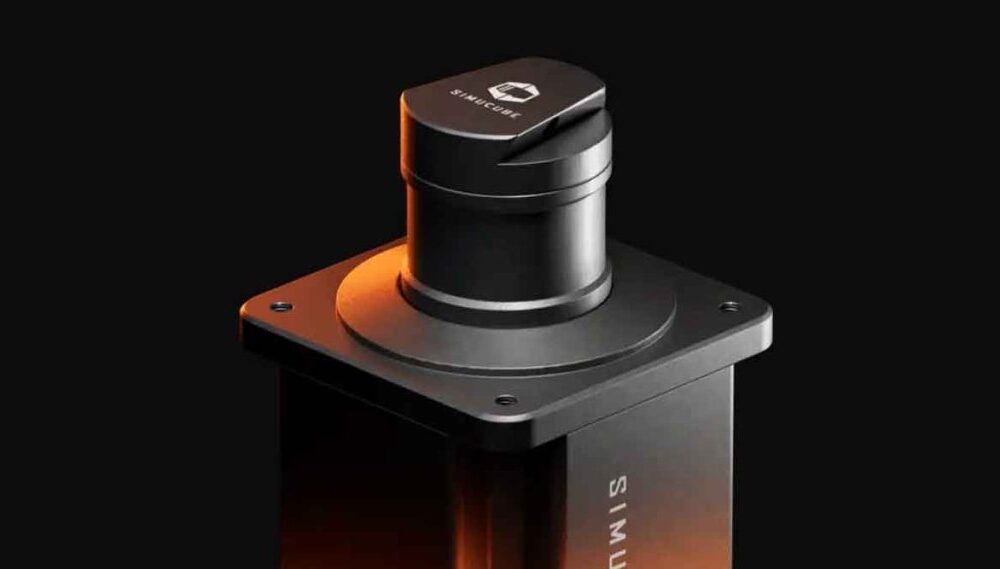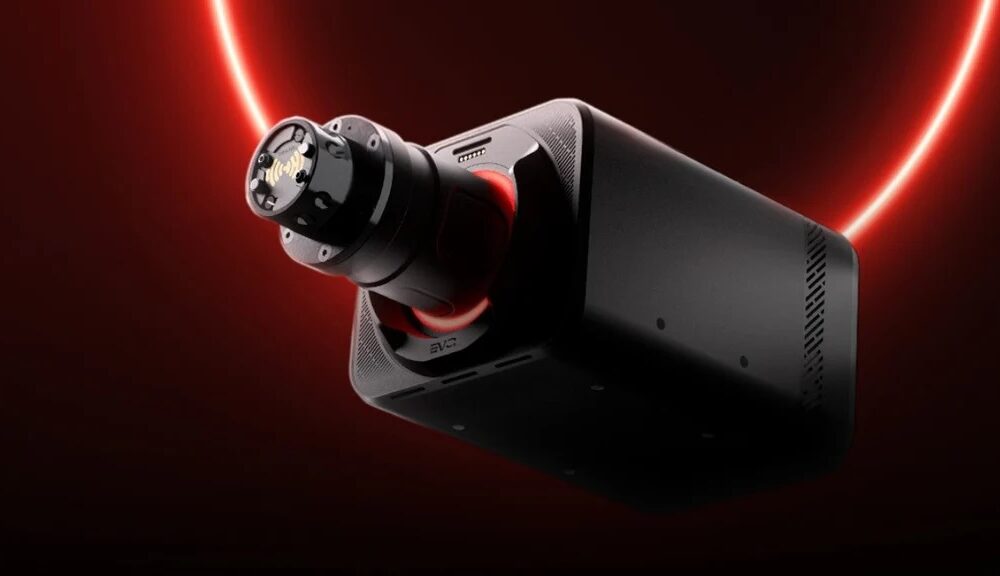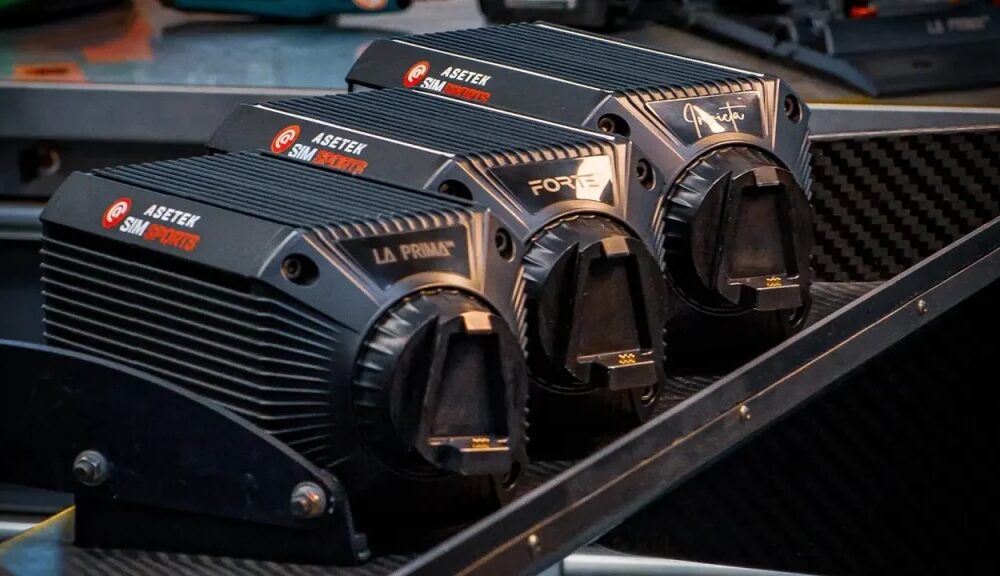iRacing is a simulation of the real racing world, and with this comes deep levels of complexity in the way the game is designed and its functions. One of the most vital aspects to understand in iRacing is the setup system. Knowledge of this system can make or break a car’s performance, and with that, the expert team at Coach Dave Academy has put together this breakdown of the basics needed to succeed in your setup journey within iRacing.
What is a setup?
Within iRacing, every car is modelled to simulate its real-life counterpart, and there are mechanical and software adjustable parts and components. These can include:
- Suspension
- Dampers
- Spring rates
- Engine maps
- Brake bias
- Tyre pressures
- Toe values
- Front & rear wings
Each of these different adjustable parameters affects the behaviour of the car you are driving. Of course, some may have more effect than others, but the overall settings of all of these adjustments make up your setup.
So why would you want to adjust your setup when there is already one applied to the car? It comes down to several factors including:
- Track selection
- Style of driving needed
- Weather conditions
- Tyre compound choices
- Track grip levels
When determining what type of setup is required you need to consider all these factors. Unfortunately, the stock setups within iRacing will not allow you to take advantage of these areas of your car, so you must go in and adjust the setup for the track you are about to race on.
Our Engineered iRacing Setups
With the Coach Dave Delta app when you have a Coach Dave Academy iRacing setup subscription all this becomes easy. Delta is fantastic in this area because it takes away all the guesswork you may need with a setup. The app auto-installs all the expertly-made setups by the team at Coach Dave Academy for you for whichever car/track combination you are racing with.
- You get qualifying setups
- You get race setups
- You get the onboard laps
- You get the data packs
- Made by professional iRacing drivers and engineers
Gain seconds in lap time with our incredible iRacing setups that include professionally developed setups and referance laps for every car available in the official weekly racing series that you can find on iRacing.
What adjustments can be made?
As mentioned above, almost an infinite amount of adjustments can be made to a car within iRacing. The basics of car setups will be described in this section, which is designed to get you as a sim racer to a level of basic understanding. To truly master setting up a car, lots of trial and error and practice will be needed, especially as combinations will vary for different vehicles.
Whether you are setting up a downforce-focused Dallara F3 or a mechanically strong TCR car such as the Hyundai Elantra, we’re here to help, providing setups for both cars, and many more in between.
Tyres
Starting with one of the last adjustments made within a car setup, but ultimately the most vital as this is your contact patch to the track you are racing on. There are typically two adjustments that can be made depending on the series rule set: tyre compound and pressure.
- Operating window – The ideal operating window of a tyre should always be between 85 and 100 degrees but does have variation depending on the car and tyre compound.
Compound
The tyre compound is related to the grip level the tyre can provide at peak performance. Therefore, every different option will offer a diverse range of characteristics for each type of car. In iRacing you have three compounds to choose from:
- Soft – The softest tyre compound. This compound equals the most grip and fastest lap times, but also the shortest tyre life meaning the drop off is most severe.
- Medium – A well rounded compound means tyre life lasts longer than softs, meaning your lap times will stay consistent for longer. You can keep these in the peak operating window longer.
- Hard – The slowest but most durable compound. Lap times suffer the most but you wont be visiting pit lane anytime soon. Endurance tyre for those long stints/double stints.

Pressures
Looking now at pressure this controls the level at which the tyres are inflated and therefore how firm the tyre is. The lower the pressure of the tyre the wider the contact patch is and the more potential grip there is available. However, if the pressure is too low then the tyre does not provide any structural support and can lead to the car sliding and becoming unstable.
- Pressure – The pressure will also dictate the wear rate of the tyre as the more contact with the road the faster the tyre will generally wear out.
- Performance – Finding the balance between pressure is key to maximising the performance of a tyre.
- Testing – Practice sessions are the best situation to test this setting as weather and temperature conditions are likely to be similar to an upcoming race.
Suspension
This factor determines what your input on the wheel is translated into on the road and how the car will react to external factors that the track throws at the car. For example, a stiff car will be more sensitive to your steering inputs but may be skittish when facing a rough track surface or curb.
Toe
The toe angle of a car describes the angle at which the wheels are facing when you look at the car from above. A toe-in angle points the tyres inwards to the car, increasing corner entry stability but also increasing oversteer through the mid-phase and exit of the corner. Conversely, a toe-out angle points the tyres out from the car, making the car more reactive to steering inputs but also more prone to oversteer.
- The Global Mazda MX-5 Cup Car is a prefect example of how toe effects a car as the team at Coach Dave Academy found out when making the Mazda MX-5 Cup Car Setups for the Sim-Lab Production Car Challenge. Toe greatly affected the rotation speed of this nimble machine helping extract faster lap time.
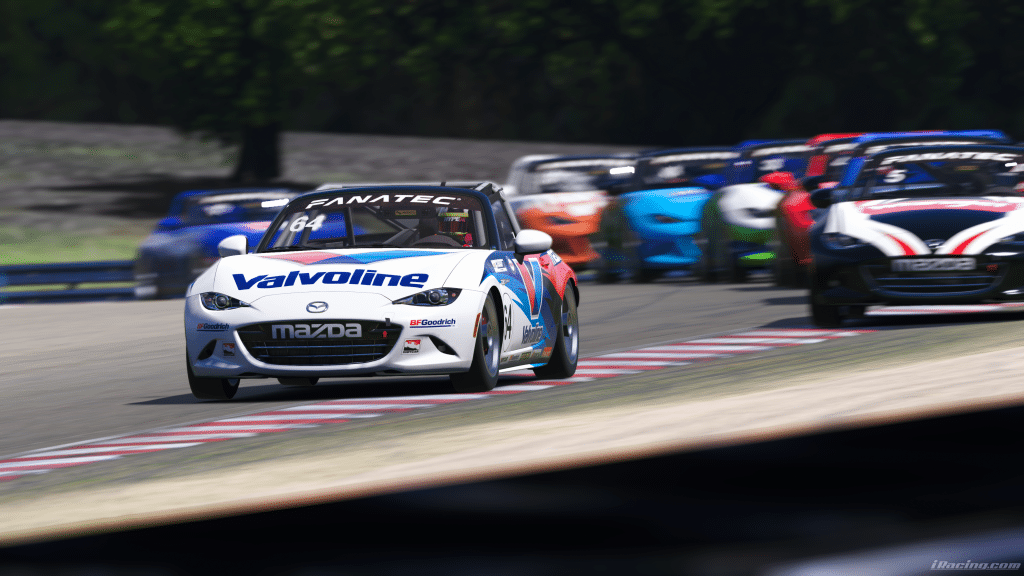
Camber
This describes the angle at which the top of the tyre is when you look at the car head-on. This is a major driver in adjusting the size of the contact patch the tyre has with the track. Camber adjustments are described as either positive or negative.
- Positive camber – Having positive camber points the tyre away from the centre of the car and generally reduces the contact patch.
- Negative camber – Applying negative camber points the top of the tyre towards the centre of the car and will generally increase the contact patch of the tyre through high load corners.
- Preferred camber – A negative camber setting is preferable in most cars, but note that even minor adjustments can significantly affect a car’s performance.
Caster
This describes the angle at which the steering axis is the angle from a side view of the car. The basic way to setup caster is to increase the angle until understeer is felt within high-speed corners. However, more specifically, caster angle is used to tweak the car’s stability within braking zones and mid-corner phases.
Rebound damping
This relates to the suspension shock itself and dictates the rate at which the suspension returns to its original state. Tuning this setting will affect how the car reacts to bumps on the road.
- Progressive damping – Adjusting this value to a lower setting will slow the return to the original state and become more progressive. Too low on the other hand and the car may compress too much
- Fast damping – A higher value will return the car to its original state much faster. Too fast however, and the car may skip over bumps and become unstable.
Compression damping
This adjustment modifies the overall speed that the suspension spring will compress when a bump hits the wheel. A lower compression setting will result in the tire being loaded for a shorter period and vice versa for high values.
- Low damping – Having a value too low can lead to less load placed on the wheel and lock the suspension in the extended phase, reducing overall tire grip.
- High damping – Setting compression too high can lead to on throttle understeer and result in the suspension never compressing and not absorbing the bumps on the track.
Spring rate
This, simply put, is the stiffness of the spring, which determines how much load is needed for the physical spring to compress. A higher spring rate makes the car much stiffer, and lower will soften the car. This is an important factor as this plays a part in the weight transfer of the car and which tires become loaded within the cornering phases.
- Stiff spring rate – Having the springs too stiff will not allow the load to be placed on the front tires during corner entry causing understeer.
- Soft spring rate – If the spring rate is too low, the car will “roll” too much, leading to a generally sluggish feel not usually wanted within any racing car.
Spring Perch Offset
This is what ultimately adjusts the ride height of your car in iRacing. Ride height is a valuable adjustment to control both mechanical grip and the aero balance of the car. A lower ride height at the front will result in rear oversteer and a lower ride height at the rear will result in understeer. Keeping the front and rear values relatively similar is advised, and too much difference can result in an unbalanced platform.
In addition, note that the pitch and roll of the car can affect the aero balance of the car and often needs to be adjusted in tandem with wings and the ride height.
Coach Dave Delta
- Every ACC, iRacing & LMU Setup Available
- New Setups / Hot Laps Each Week
- Compare Lap Data With Pros to Improve
- Discounts on Coaching, iRacing Subs & Gear
Aerodynamics
Another key aspect of every car, if available, is the front and rear aero, most commonly known as the front splitter and rear wing. These are tools to increase aerodynamic grip on a car to help improve grip through corners. The simple rule is the more aero added to a car, the better the grip but at a reduced top speed.
Another aspect that aero adjustments are helpful for is balancing a car after other areas of the car have been tweaked.
- Rear aero – More rear aero increases rear grip and reduces oversteer.
- Front aero – More front aero will increase front grip and reduce understeer.
- Balanced aero – it is vital to both front and rear values are not too different as the car will not sit flat, which can increase drag and cause issues with car stability.
Breaking down aerodynamics into its three key adjustment areas can give you a better understanding of how to tweak or alter the car to suit your driving style or maximise performance on a particular circuit.
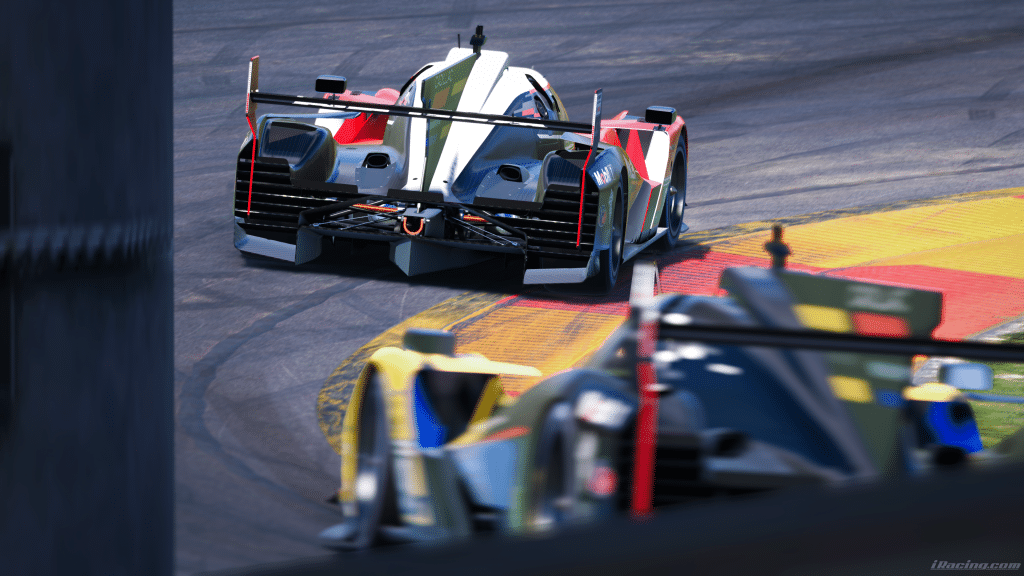
Rear wing
Adjustment to the rear wing will adjust the downforce level subjected to the rear end of the car. To increase the aerodynamic load on the rear more wing angle should be added, this will reduce oversteer and in turn increase understeer.
Front Splitter/wing
The front splitter/wing allows load to be applied to the front end of the car. When adjusting the front splitter/wing, increasing the value will apply more downforce and generally, increase the front end grip and induce rear end oversteer.
Ride height
This may not seem immediately obvious to control the aerodynamics of a car but is key to allowing the front and rear wings to perform at their most efficient level. The simple rule to follow is that the lower the car the more downforce is produced, as the air is forced through the gap between the car and road which sucks the car to the floor.
Want to experience aerodynamics in all their glory? The Ligier JS P320 LMP3 or Cadillac V Series R that Coach Dave Academy creates setups for is a great example of two cars with high downforce and aerodynamic ability.
In Car Adjustments
Traction control
This setting controls the amount of slip that the car’s ECU will allow the tyres to exhibit before power is artificially reduced. This setting is most often engaged during corner exit when the throttle is applied too early, and the rotational force of the wheel exceeds the potential grip available.
This setting is fine-tuned depending on a combination of many factors such as:
- Track selection
- Car choice
- Tyre grip levels
This is also often used for drivers’ drivability improvements, so start high, then reduce this value until you are comfortable. Some cars, however, don’t have traction control at all. Here, you might have to make adjustments to the car elsewhere to help you put your foot down without spinning up the rear wheels.
- The Porsche 992 GT3 Cup is a great example of this, because it is without traction control so really relies on throttle inputs. Its also a car which we provide full setup bundles for, so you can see how we set a car up for this exact scenario.
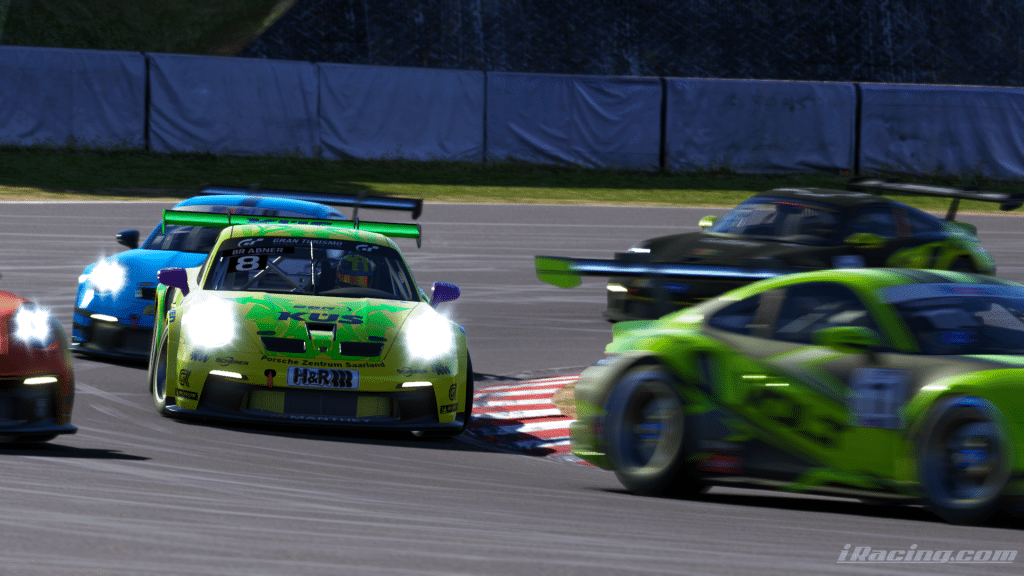
Throttle shape
The throttle shape or map controls the relationship between your throttle input and the power delivered to the rear wheels. A computer governs this through a curve on a graph. For example, a linear throttle map will provide a more 1:1 relationship between the amount of throttle depression and power delivery. Other maps will vary the curves from less power at the initial throttle to less as further depressed. Tweak this setting to your own pedal set and preference.
Engine Map
An engine map is what controls the overall performance of the engine in a car, this is not related directly to power delivery but more to the max power availability. This functions by reducing fuel usage and also through the cars electronic control unit (ECU) adjusting the tuning settings such as air and fuel ratio or power delivery curves.
- Map for laps – When selecting an engine map, typically you will want the one with the most performance to extract the best lap times, as generally engine wear or fuel usage isn’t a concern.
- Fuel Saving – When it comes to endurance racing you may want to select an engine map with lower performance to decrease the fuel usage and extend your stint.
ABS
ABS, or Anti-lock Braking System, is designed to reduce the potential for your brakes to lock up when applying peak braking performance. This system functions by applying small amounts of braking at short intervals avoiding under rotation and the wheel locking up. The overall aim is to increase the stability of the car through the breaking zone. Some cars may not have this system such as formula or GTE cars but is a key tool to use if available.
- High ABS – A higher ABS setting will allow you to apply the brakes deeper into a corner but will in turn reduce the peak braking performance and increase the overall braking distance needed to slow the car.
- Low ABS – A lower ABS setting will reduce the braking distance needed but the car is likely to be more unstable during the braking phase.
For newer drivers start with this setting relatively high and reduce the value as you begin to get comfortable with the braking of the car. This tool is one to be used to gain the last few tenths around a lap or improve the drivability of a car.
Where Can I Find Fast iRacing Setups?
If you are looking for a setup developed by a team of professional drivers and engineers, then Coach Dave Academy is the best option available on the market that sells setups for cars within iRacing.
The iRacing team behind Coach Dave Academy boast drivers and engineers with iRatings averaging 9k, with numerous championships, wins and podiums across a plethora of racing disciplines.
Gain seconds in lap time with our incredible iRacing setups that include professionally developed setups and referance laps for every car available in the official weekly racing series that you can find on iRacing.




